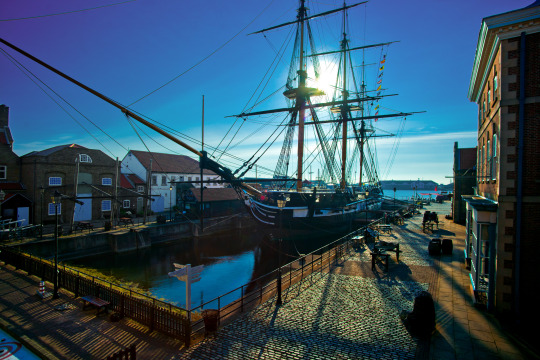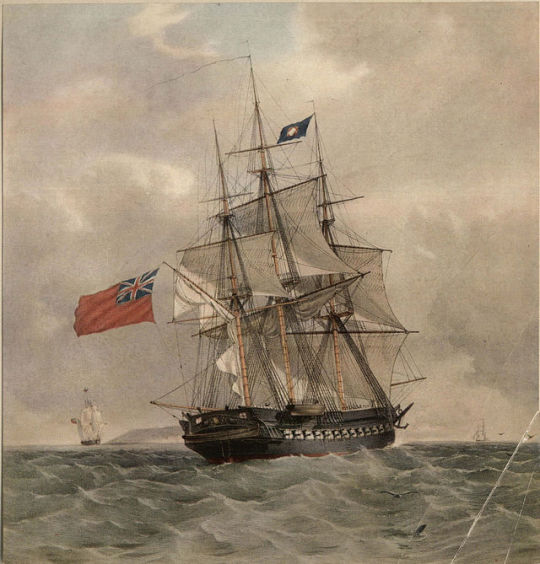#hms leda (1800)
Text
Research dump. Working on a theory that Leda Strike was named Leda not because of the well-known myth depicted on the wall of the Rivoli, but because her father was a ship-enthusiast. It keeps me out of trouble. And it's long struck me as an odd name to choose for a child.
HMS Leda was an 18pdr-armed, 38 gun, Fifth Rate frigate, built at the Chatham Royal Dockyard. The ship went on to be the lead vessel of a class of 47 large frigates.
Two of the Leda class still exist, and one - HMS Trincomalee - was, for some time, moored in Falmouth.
So pretty. I know that's not the point.


There was also a minesweeper called Leda but I can't find a Cornish connection. Not that there needs to be one, I suppose. Ted and Leda's father might have been interested in war ships in general.
9 notes
·
View notes
Text

Today in the 13th door a little beauty that is often forgotten. Once built in India, she is now the oldest English frigate still afloat. We are talking about HMS Trincomalee

HMS Trincomalee
More infos about her here:
Laid down in Honourable East India Company's shipyard in Bombay in 1816, together with her sister ship HMS AMPHIRITE and launched on 12 October 1817, TRINCOMALEE was one of 47, 38-gun Leda class frigates built between 1800 and 1830. Nearly all of them were of oak, but the two Bombay ships were made of Malabar teak.
Her building had been delayed by the plans being lost on HMS JAVA which was sunk by USS CONSTITUTION, a second set of plans not arriving in India until two years later.
When TRINCOMLAEE reached Britain in 1819, she went straight into 'ordinary' for 26 years in Portsmouth harbour. In 1845 she was commissioned for service in areas which lacked adequate coaling stations for the new steam vessels. Her stern was modified to an elliptical style, and she was reclassified as a 26-gun Corvette.
In 1847 she served in the West Indies and then in the Eastern Campaign of the Crimean War. After patrols in the Pacific she was again paid off into ordinary in 1857. Three years later she became a Drill Ship for Royal Naval Volunteers. Between 1860 and 1897 she was moored, mast-less and with deckhouses in Sunderland then West Hartlepool and finally in Southampton. She was sold to shipbreakers in 1897.
The philanthropist G Wheatly Cobb bought HMS TRINCOMLAEE to replace the training ship FOUDROYANT which had foundered two years earlier on its way to take up a similar role, and renamed the ship FOUDROYANT. She was moored in Falmouth and later at Milford Haven and finally at Portsmouth. On Cobb's death on 1932 she was managed by the IMPLACABLE Committee of the Society for Nautical Research.
During the war the vessel was taken over for the training of Sea Cadets. In 1947 she was given back to her owners and became an adventure training base for Sea Cadets, Sea rangers, Sea Scouts and other youth groups. From 1957 to 1987 she was moored at the entrance to Haslar Creek, Portsmouth. The Foudroyant Trust later moved her further north to avoid her being rammed by submarines. Training was discontinued due to the poor state of the ship and insufficient trainees. In 1987 the Foudroyant Trust transferred the ship to Hartlepool where a private yard had just paid off after restoring HMS WARRIOR 1860. In 1990 the Trincomalee was restored under the Trincomalee Trust. In 2016 the National Museum of the Royal Navy took responsibility for oversight of Trincomalee.
100 notes
·
View notes
Photo

HMS Pomone 1805, Color lithograph by T. G. Dutton after painting by G.F. St. John (c) Macpherson collection in, Alan Moore, Sir, Bt. (1926) Sailing Ships of War, 1800-1860
The Pomone was a fifth range frigate with nominal 38 guns and belonged to the very successful Leda class. Right after its completion it had actually been assigned for canal service, but it managed to capture two prizes in Spanish waters. In the years 1806/7 she even managed to capture or sink 21 French ships under her new Captain Sir Robert Barrie.
On October 21, 1809, the ships Pomone and Alceste were ordered to observe the French naval base Toulon and to determine possible enemy movements. Barrie could now observe how a French part of the fleet in the form of a squadron was getting ready to sail. He immediately sailed to the Golfe du Lion to meet Admiral Lord Collingwood, who was there on his 110-cannon flagship Ville de Paris to report to him on the events. Collingwood and a British squadron took up the pursuit. Back in sight of the French squadron, the Pomone successfully fought five ships belonging to the French convoy before the rest of the convoy lost itself in the dark.
Rear Admiral George Martin was able to resume the squadron the next day on the south coast of France and continued the pursuit. Some French ships obviously came under so much pressure that the Lion and the Robust stranded at the level of the port city of Frontignan. So that the ships did not fall into British hands, after two hours of futile liberation efforts, their burning was finally ordered. The following years she was also very successful and made some prizes. Among them was a ship on which Lucien Bonaparte, his family and some followers stayed. Captain Barrie then took him to the British occupied island of Malta, which he reached on 23 August 1810, together with a total of 40 other people.
On 13 March 1811 the Pomone was located between Corsica and Sardinia when it took up the pursuit of the 16 gun brig Etourdie. It was not until 14 March that the Etourdie was able to catch up, so that the crew of the Etourdie set fire to their own ship on the island of Montecristo in order not to be captured or even taken as a prize. Around 3 p.m. of the same day, the French ship finally exploded due to the progressing fire.
On April 30, 1811, the Pomone, together with the frigate Unite, reached Sagone Bay, Corsica, after reports of a collection of enemy ships in this area. The next day, the British Brigg-Sloop Scout joined in and three enemy ships protected by a coastal battery were finally encountered: The 26-cannon giraffe, the 14-cannon Nourrice and an armed merchant ship.
As the weather was calm, the British captains rowed their ships with the dinghies within firing range and heavily fired at the French warships and land defences. After about one and a half hours of battle, the destroyed coastal battery had to stop fighting and the French ships finally caught fire. It is suspected that the fires on board the French ships were also due to the destruction of a Genoese coastguard tower of the coastal battery, as the ammunition store was also hit and destroyed. The British then rowed at a safe distance from the burning ships before they also exploded. The Pomone had two dead and 19 wounded to mourn, while the Scout and the Unite had to register only six wounded. The mission had thus been successfully completed.
On October 14, 1811 it was on its way back from the Mediterranean Sea to its home waters for some repairs. On board at this time was Sir Harford Jones, the British ambassador of Persia as well as some Arab stallions, which should be a gift from the Shah of Persia to king George III. At 7 o'clock the ship hit the rocks of "The Needles" of the Isle of Wight, because the Master James Sturrock confused the lighthouse of The Needles with the lighthouse of Hurst Castle. The Pomone came into contact with an underwater rock southwest of Needles Point. The crew tried to save the ship by cutting the masts, but couldn't get it free anymore. Due to the lucky circumstance that there was hardly any wind, auxiliary ships were able to come within an hour and save the entire crew. Over the next three days, masts, cannons, cargo and even the Shah's horses could be salvaged.
A trial convened on October 25 cleared Barrie and his officers of all guilt, but Master James Sturrock disciplined him for his faulty navigation.Barrie was then transferred to Dragon, a third-rate, 74 - guns.As a result of the accident, the Admiralty of the Royal Navy ordered that night-time voyages near The Needles should be avoided.
Interesting fact: At the wreck site of The Needles in 1969 the remains of two shipwrecks were found: On the one hand from the Pomone and from the Assurance which had accumulated at the same place in 1753. The wreck site is subject to the "Protection of Wrecks Act" of 4 April 1974, a decision of the United Kingdom government to protect shipwrecks from unauthorised access and plunder. In today's Underwater Archaeology Centre in Fort Victoria on the Isle of Wight, the museum there also partly deals with the wreck of the Pomone. So far, more than 3000 artefacts have been recovered and evaluated with official permission.
#naval art#hms pomone#sorry her history is a bit long#but damn she was a little sea bitch#1805-1811#age of sail
150 notes
·
View notes